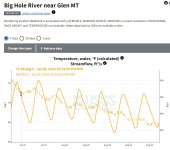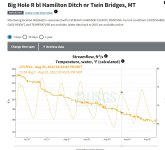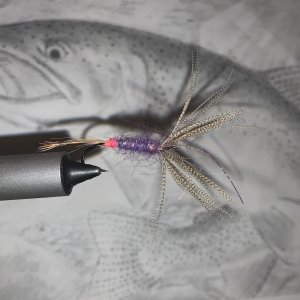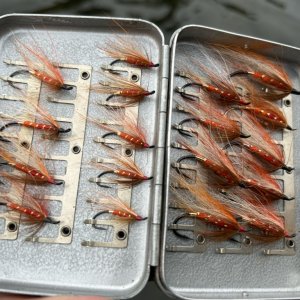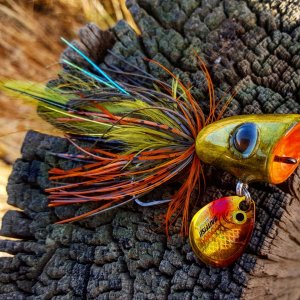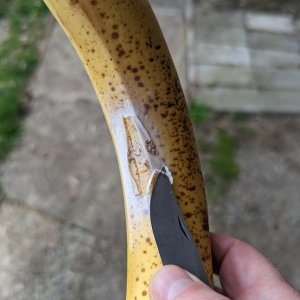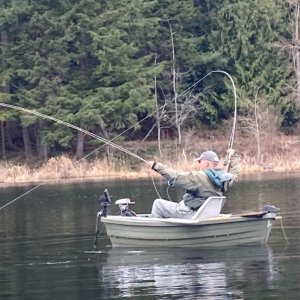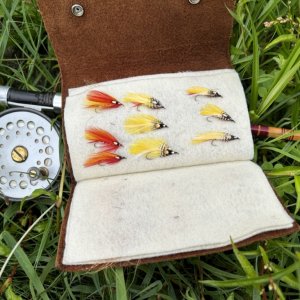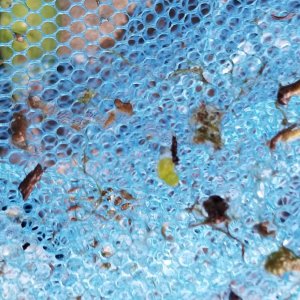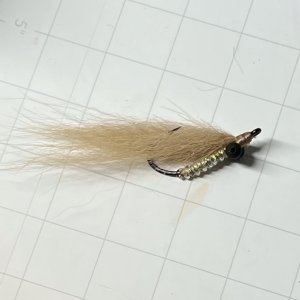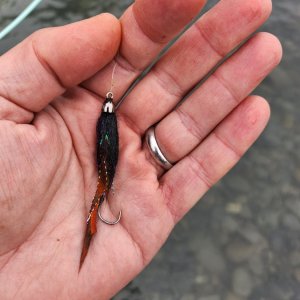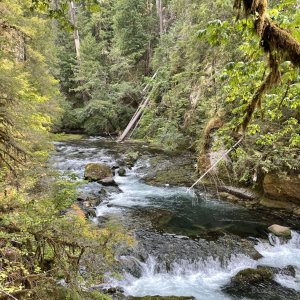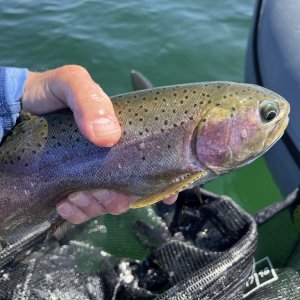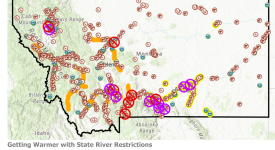
As I headed out well before dawn on this Thursday morning, I was confronted with the fact that Montana FWP had declared Hoot Owl closures on over a dozen stream sections in SW Montana the previous week. Hoot Owl closures are a simple management tool to protect fish from stress when water temps exceed predetermined levels for three days or more. You can’t fish from 2PM until midnight as that’s when the temps are at their peak. Hoot Owl closures usually engender consternation from anglers and enviros that lament the decline of our SW Montana fisheries attributed to all manner of bogey man reasons. On another forum, one member commented that Hoot Owl closures were just one step away from all our waters becoming warm water fisheries.
The reality is IMO however is that Hoot Owls are a good thing not only for the fish but in some waters for the adventurous angler as well. Having started fishing in SW Montana in the early 1970s, I can say without reservation that in late July and August, SW Montana is hot and dry. 90-degree days are not unusual. This is not a recent phenomenon but the norm. Irrigators with water rights have always used those rights in the valleys our rivers flow in. In late July and August, the water in our rivers dwindle and the waters warm. That’s the norm. I don’t know when the “Hoot Owl” closure management tool went into effect, but they didn’t exist in the early 1970s.
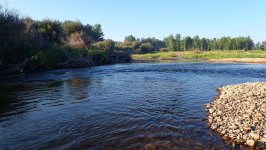
So, on this trip I was going to fish a section of the Rio Orifice Grande that had recently been subjected to a Hoot Owl closure. Indeed, it was, as it almost always has been, a dwindling, warming river in early August. When I arrived at the river, as I expected, there was the bright orange placard stapled to the fence post announcing the closure. I couldn’t fish after 2PM to reduce stress on the fish in the warming water. With a 6AM start just before dawn the 2PM closure was no obstacle at all. Two weeks earlier when I last fished this section the flows were around 800 CFS. Today they were around 400 and the difference was obvious. I estimate the overall river level had dropped between 12-18”. The inter pool riffles were narrower, but longer and shallower. The flow lines in the pools had narrowed. It indeed was a dwindling river.
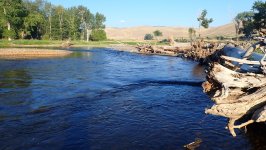
Deep pools sheltered by complex log jams provide refuge even during low water
I mentioned above that Hoot Owl closures provide some advantages to the adventurous angler. First, overall pressure on Hoot Owl river sections drops precipitously, especially sections that are usually floated. Not only are waters lower and more difficult to float, full-day outfitted floats aren’t possible and in some cases float lengths are too long for a half-day float. The overall impact is fewer anglers and more opportunities at hungry, undisturbed fish. The other reality is that low, warmer water doesn’t necessarily mean there aren’t deep, cool refuges along the river course. In a river like the lower Rio Orifice Grande that flows through extensive Cottonwood bottoms, nature has carved out huge, deep pools that might be upwards of 10’ deep at their deepest point. A 12-18” drop in river levels and warmer water has little effect on these refuges. Additionally, many reaches of Cottonwood bottom rivers are shaded by tall groves of trees for most the day. Finding and fishing these refuges in the early mornings during Hoot Owl closures is usually very productive. Even the midnight stones were still active and abundant along the riffle edges.
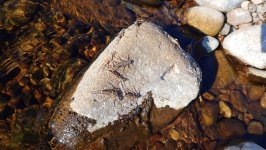
Midnight stonefly nymphal husks were abundant along most riffle edges.
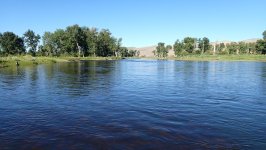
Big Boy Pool - Note the tongue of flow angling in from the left - 10' deep+ at the heart of the pool
For me, today was no exception. By 9AM I had reached a pool I call the Big Boy pool because it almost always delivers some decent fish. The deepest section of the pool covers about 30 yards and benefits from a strong flow entering the pool from the left bank. This was sink-tip, streamer water. Even though there were a few rising fish working midges, tricos and caddis, the dry fly only resulted in smaller fish. The big boys were down deep at the heart of the pool. I worked the pool with a Pine Squirrel bugger and hooked six browns that all pushed 18”. Every one of them connected as the bugger swung through the bottom of the pool.
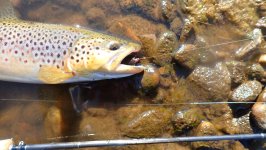
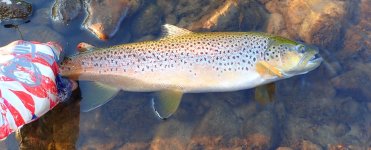
By 10:30AM I was tiring as the fight against mosquitos and deer flies was getting tedious, one deer fly having viciously bloodied my ear before I could wack him. Wading with the kayak was actually a bit tougher with the lower water as riffles were longer and shallower. Also, the lower, warmer water made every surface that much more slippery with the invisible slime that accumulates on the rock surfaces. It takes a toll on the feet.
I never saw another angler all morning and it was doubtful there were any floaters coming down river as it was a fair bit to the upstream access. The fishing was great, the weather in the morning cool with a light breeze and my adventure unaffected by any Hoot Owls.

